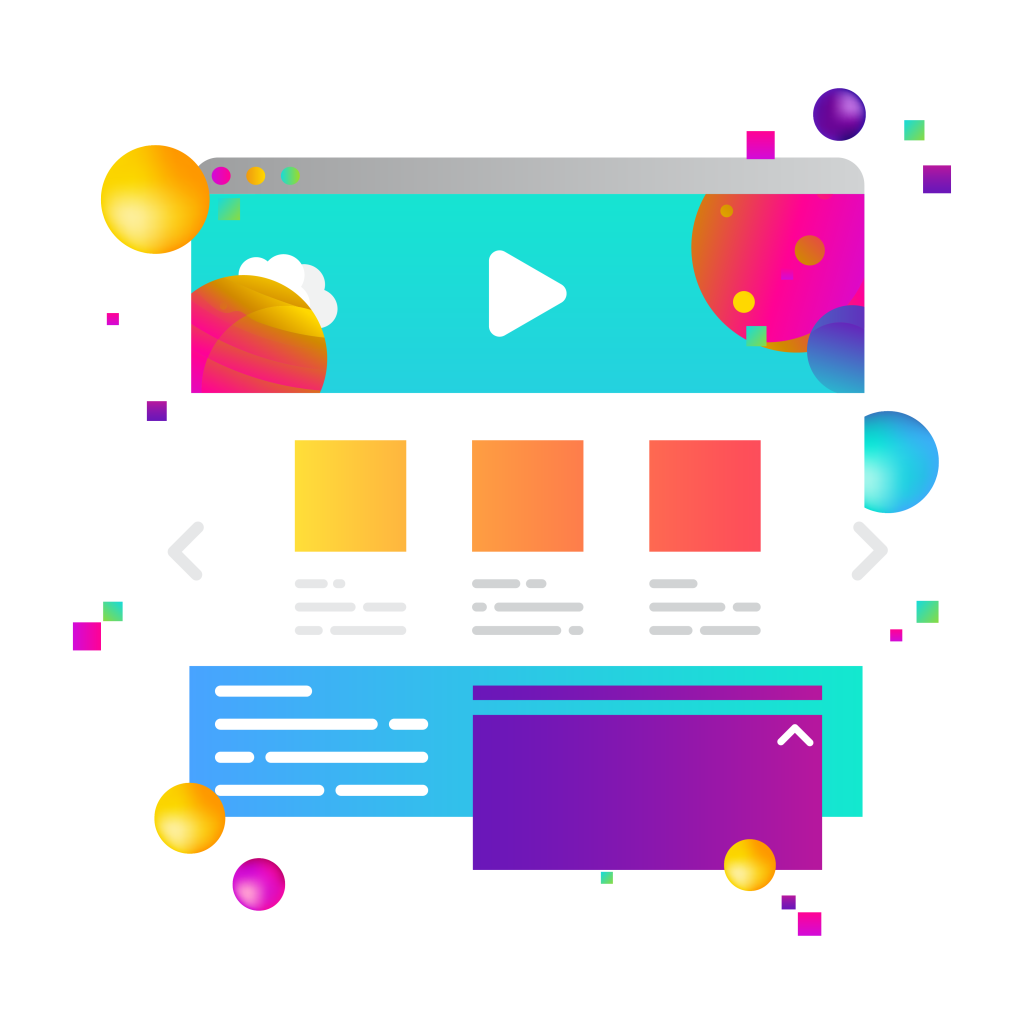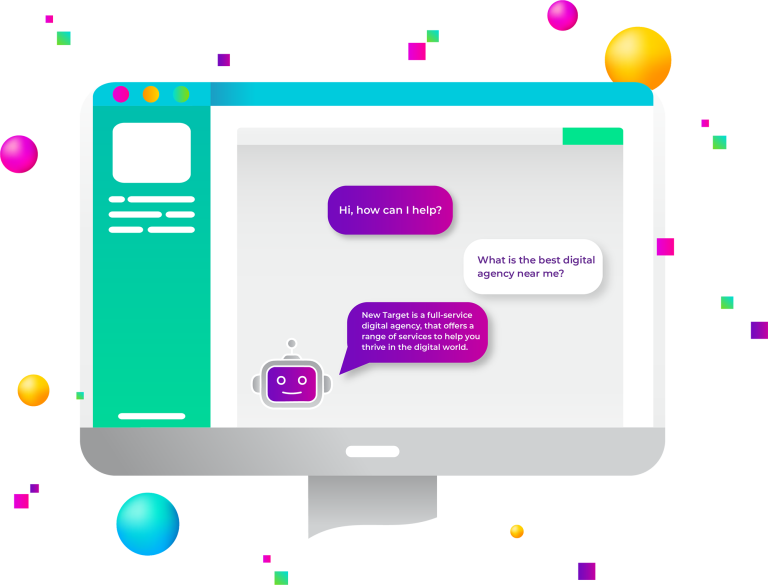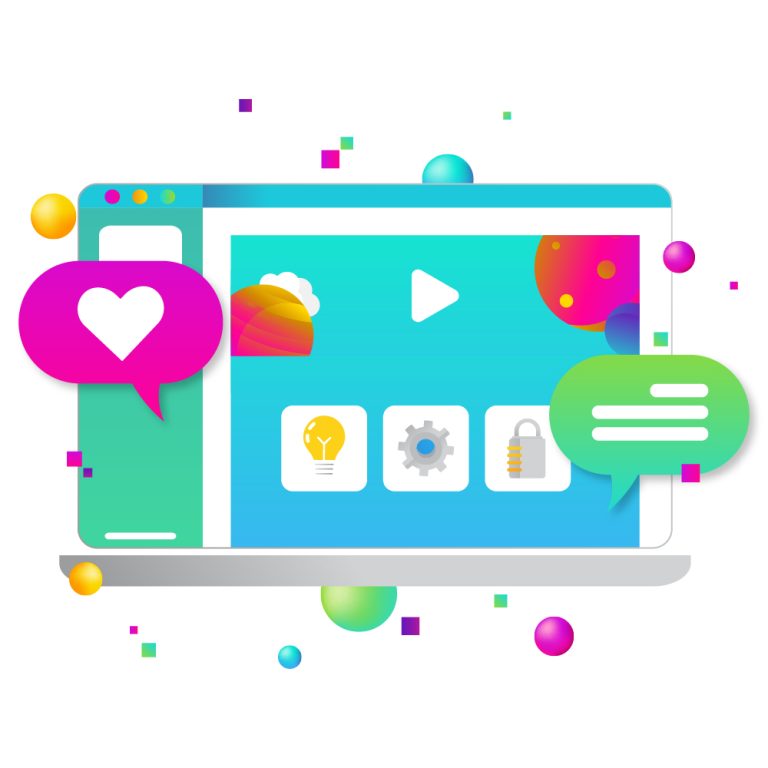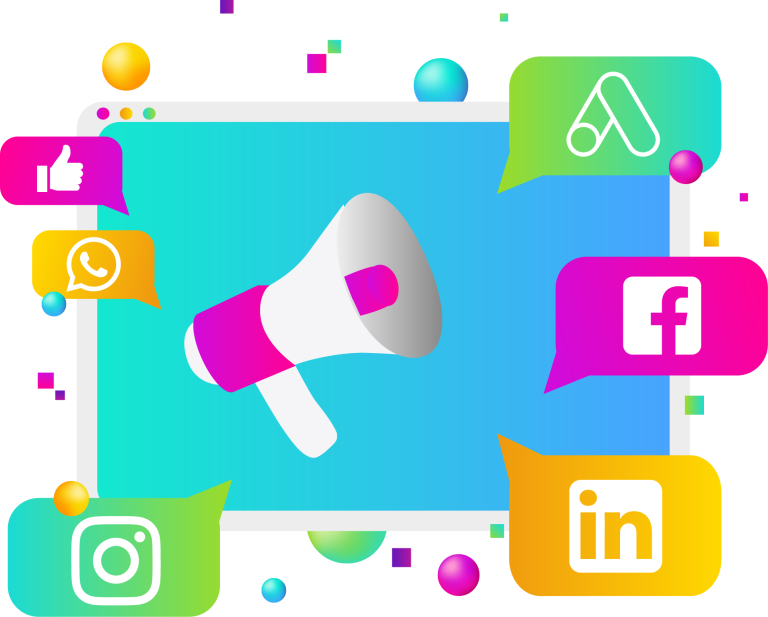
The internet is a highly visual space, and users form opinions about websites, social media posts, and digital ads in milliseconds. A bold visual design strategy can instantly grab attention, communicate messages effectively, and create a lasting impression. But what exactly makes a visual “bold,” and how can you harness the power of impactful design to enhance your digital presence?
This article will explore the psychology behind bold visuals, key design elements, best practices, and real-world examples of how striking design choices contribute to engagement and success.
The Psychology of Bold Visuals
Bold visuals are not just about aesthetics; they are deeply rooted in psychological principles that influence human perception and behavior. Understanding how the brain processes images, colors, and typography can help brands design visuals that captivate and persuade.
The Power of Color
Color is one of the most impactful design elements, with the ability to evoke emotions, establish brand identity, and influence decision-making. Studies show that people make subconscious judgments about a brand within 90 seconds of their first interaction, and up to 90% of that assessment is based on color alone.
- Red conveys energy, passion, and urgency, making it ideal for call-to-action buttons and promotional materials.
- Blue is associated with trust and professionalism, commonly used in corporate and financial branding.
- Yellow evokes optimism and creativity, while green represents health and sustainability.
- Black creates a sense of luxury, sophistication, and modernity.
Bold color choices, when used strategically, can set a brand apart and create an emotional connection with audiences.
Contrast and Visibility in Visual Design
High-contrast visuals ensure that important elements stand out. For example, using dark text on a light background (or vice versa) improves readability and draws attention to key messages. Similarly, contrasting colors in calls-to-action (CTAs) make them more noticeable, increasing click-through rates.
Emotional and Cognitive Engagement
Bold visuals engage both the emotional and cognitive parts of the brain. A striking image or a well-designed layout can elicit curiosity, excitement, or even nostalgia. This emotional response makes users more likely to engage with content, remember a brand, and take action.
Key Elements of a Bold Visual Design
Color Theory and High-Contrast Combinations
Color plays a crucial role in defining a brand’s personality and making content more visually appealing. Bold visuals often use vibrant, unexpected color combinations to grab attention. However, the key is balance—while bright colors can be eye-catching, excessive use can overwhelm users.
Typography and Font Choices
Typography is more than just choosing a font—it’s about creating a visual hierarchy that guides the viewer’s attention. Large, bold fonts make headlines pop, while unique or custom typefaces contribute to brand identity.
- Sans-serif fonts (e.g., Helvetica, Arial) provide a modern, clean look.
- Serif fonts (e.g., Times New Roman, Georgia) convey tradition and authority.
- Display fonts (e.g., decorative, handwritten) add personality and uniqueness to designs.
Using bold typography sparingly but effectively can make key messages stand out.
Imagery and Graphics
High-quality images, custom illustrations, and bold graphics enhance engagement. People process images 60,000 times faster than text, making visuals a crucial element in digital storytelling.
- Authentic photography helps brands establish trust and relatability.
- Illustrations and animations add personality and differentiation.
- Infographics simplify complex data, making it more digestible.
Whitespace and Minimalism
Bold design is not just about loud colors and oversized text—it’s also about knowing when to use negative space effectively. Whitespace (the empty areas around design elements) helps create a sense of balance, improving readability and ensuring that bold elements stand out rather than compete for attention.
How a Bold Visual Design Enhances Digital Presence
Strengthening Brand Recognition
Consistent use of bold visuals across websites, social media, and marketing materials helps establish a memorable brand identity. When people repeatedly encounter a cohesive design language, they associate it with a specific brand, reinforcing recognition and trust.
Take Coca-Cola as an example—the brand’s iconic red-and-white color scheme and distinct typography make it instantly recognizable. Similarly, companies like Apple and Nike use bold, minimalistic designs to create a strong visual identity.
Improving User Engagement and Experience
Users are more likely to engage with visually compelling content. Bold visuals reduce cognitive load by making information easier to process and digest. Whether through eye-catching hero images, well-designed infographics, or interactive UI elements, strong design keeps users engaged, reducing bounce rates and improving time spent on a website.
Increasing Conversion Rates
Visual appeal directly impacts purchasing decisions. A study by Adobe found that 38% of users will stop engaging with a website if the layout is unattractive. High-quality images, bold CTAs, and clear navigation can boost conversions by directing users to desired actions.
For example, Amazon uses bold product images, high-contrast CTAs, and well-structured page layouts to optimize the shopping experience, leading to higher conversion rates.
Best Practices for Implementing Bold Visuals
Align with Brand Identity and Audience
Before choosing bold colors or typography, ensure that they align with your brand personality and target audience. A tech startup may benefit from sleek, futuristic visuals, while an organic food brand might opt for earthy tones and natural imagery.
Maintain Consistency Across Platforms
From website design to social media graphics, maintaining a cohesive look strengthens brand identity. Use consistent fonts, colors, and design elements across all digital touchpoints.
Optimize for Different Devices
With mobile browsing surpassing desktop usage, visuals should be optimized for various screen sizes. Responsive design ensures that images, typography, and layouts look sharp on smartphones, tablets, and desktops.
Utilize A/B Testing and Analytics
Testing different design elements can provide valuable insights into what resonates with audiences. A/B testing different color schemes, CTA placements, and imagery can reveal what drives engagement and conversions.
Ensure Accessibility
Bold visuals should not come at the expense of usability. Ensure color contrast meets accessibility guidelines, text remains legible, and alternative text is provided for images. Inclusive design enhances the user experience for all visitors.
Common Pitfalls to Avoid
Overloading with Bold Elements
While bold visuals capture attention, overusing them can create visual clutter. Too many bright colors, large fonts, and contrasting elements can overwhelm users and dilute the message.
Ignoring Readability and Accessibility
Bold typography should enhance, not hinder, readability. Avoid using overly decorative fonts for body text and ensure sufficient contrast between text and background.
Failing to Adapt to Different Platforms
What works for a website may not translate well to social media. Each platform has unique requirements—Instagram favors high-quality imagery, while Twitter benefits from text-heavy visuals.
Case Studies: Bold Visual Design in Action
Spotify
Spotify’s use of bright colors, fluid typography, and engaging graphics creates a unique brand identity. Their playlists and promotional materials are instantly recognizable, increasing user engagement.
Airbnb
Airbnb’s clean yet bold design, with large imagery and intuitive UI elements, enhances the booking experience. Their use of authentic photography strengthens trust and connection with users.
Nike
Nike consistently uses high-contrast visuals, bold typography, and dynamic imagery to inspire action. Their “Just Do It” campaigns effectively blend striking design with motivational messaging.
Bold visuals are a powerful tool in enhancing digital presence, strengthening brand identity, and driving engagement. By leveraging color psychology, typography, imagery, and contrast, brands can create compelling designs that captivate audiences and encourage action.
However, balance is key—while boldness grabs attention, clarity and usability ensure long-term engagement. By implementing best practices, testing designs, and maintaining consistency, businesses can harness the power of bold visuals to make a lasting impact in the digital space.
Bold visuals are more than just eye-catching—they’re essential for standing out in today’s crowded digital world. Whether you’re building a brand, launching a new campaign, or optimizing your website, great design drives engagement, builds trust, and converts visitors into customers. But achieving that perfect balance of creativity and strategy? That’s where New Target comes in.
At New Target, we don’t just design—we craft compelling digital experiences that make an impact. From stunning website designs and engaging branding elements to high-converting UI/UX strategies, our creative team specializes in bold, innovative visuals that elevate your brand.
🔹 Custom website designs that captivate and convert
🔹 Branding & identity development for a lasting impression
🔹 UX/UI expertise to enhance usability and engagement
🔹 Data-driven creative solutions tailored to your audience
Your website is your digital storefront—make sure it stands out. Let New Target bring your vision to life with high-impact visual design that drives real results.
Ready to transform your digital presence? Let’s create something bold together.



